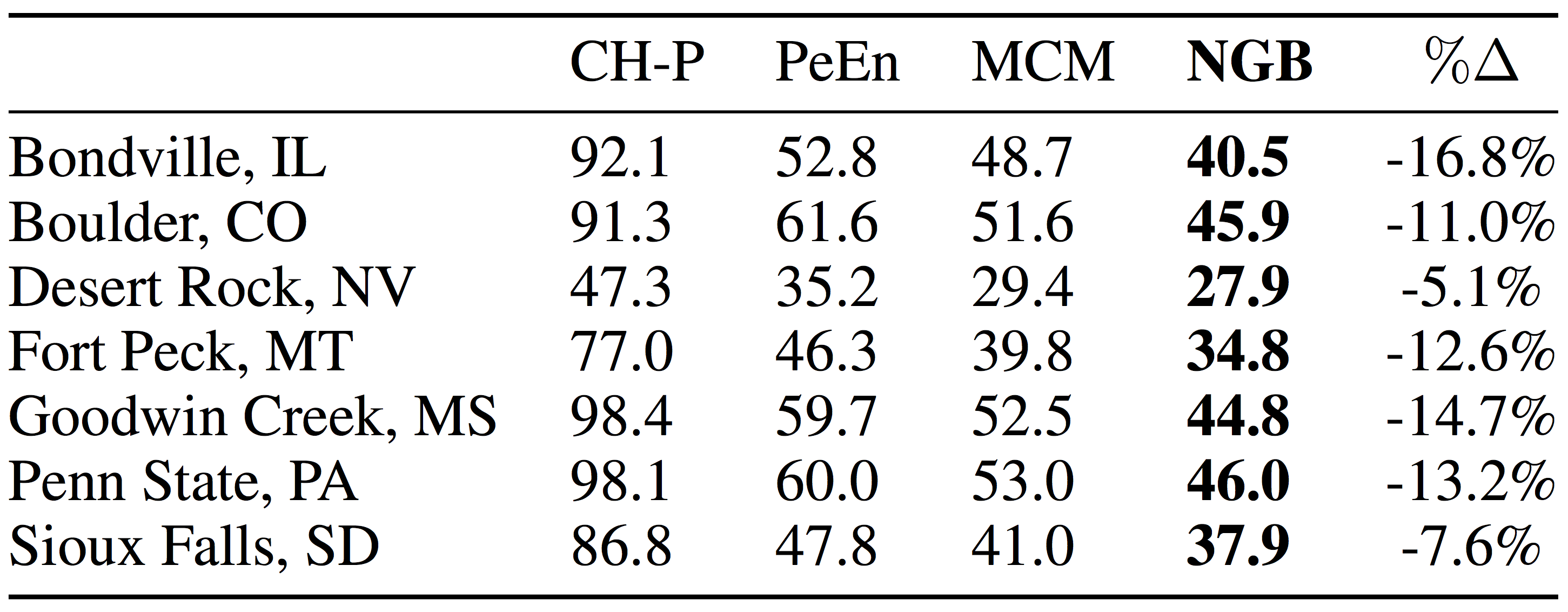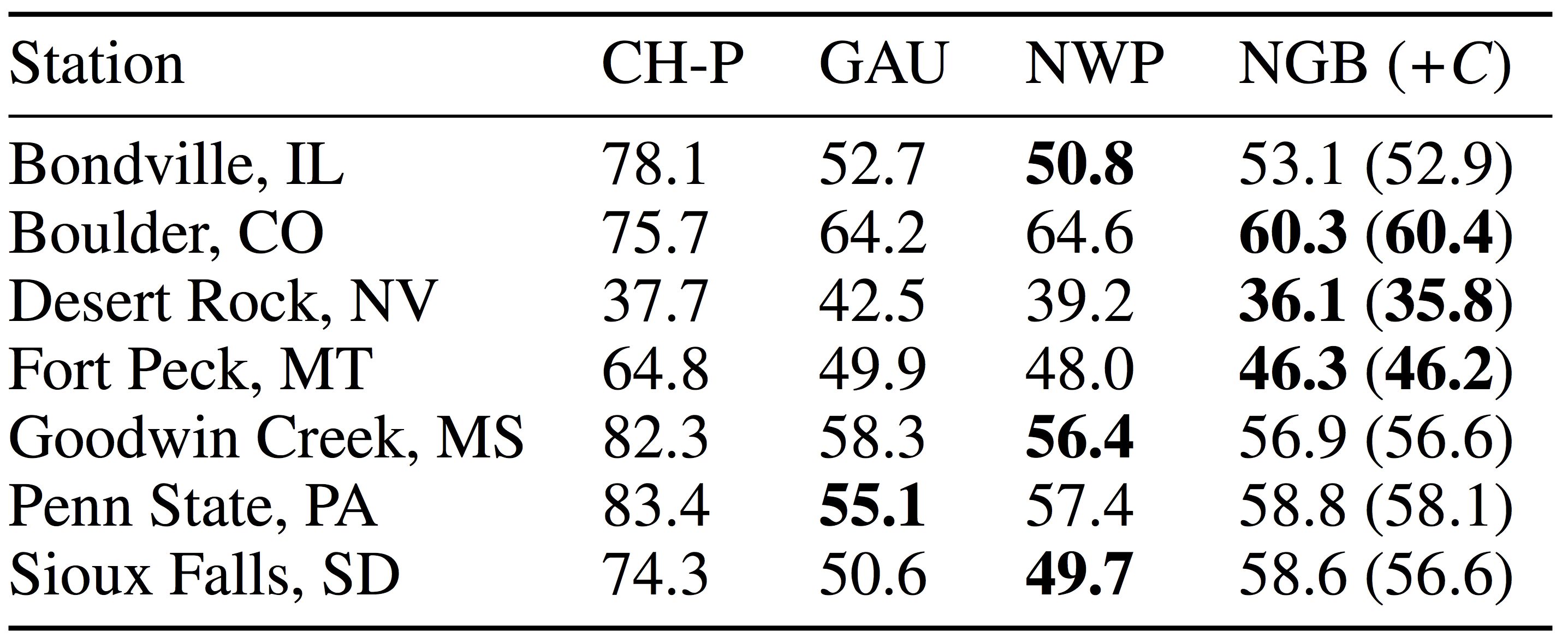We developed a variety of probabilistic models for forecasting solar irradiance.
Increasing adoption of renewable energy in the electricity sector is essential to the reduction of anthropogenic greenhouse gas emissions. Due to the high volatility and intermittency of solar energy, solar forecasting methods have become necessary to increase the penetration of solar power into the grid while ensuring cost-effectiveness and security. Solar forecasting methods that characterize uncertainty have the potential to aid real-time grid integration of solar energy and help gauge when to deploy new storage.
Read The Paper
Figure 1. NGBoost 5 minute resolution probabilistic forecasts starting 5 minutes ahead up until one hour ahead, shown here for several days at the Boulder SURFRAD station.


